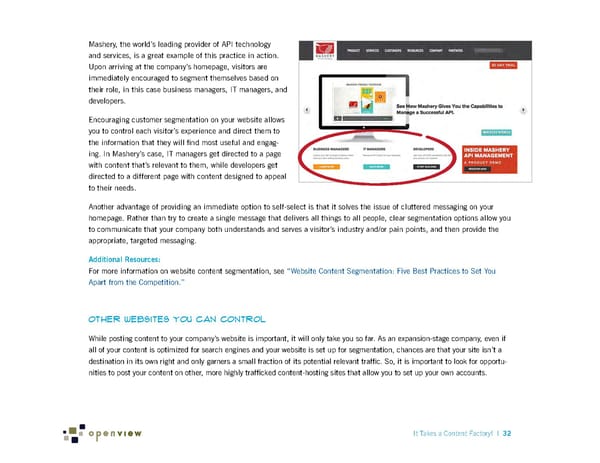Mashery, the world’s leading provider of API technology and services, is a great example of this practice in action. Upon arriving at the company’s homepage, visitors are immediately encouraged to segment themselves based on their role, in this case business managers, IT managers, and developers. Encouraging customer segmentation on your website allows you to control each visitor’s experience and direct them to the information that they will find most useful and engag- ing. In Mashery’s case, IT managers get directed to a page with content that’s relevant to them, while developers get directed to a different page with content designed to appeal to their needs. Another advantage of providing an immediate option to self-select is that it solves the issue of cluttered messaging on your homepage. Rather than try to create a single message that delivers all things to all people, clear segmentation options allow you to communicate that your company both understands and serves a visitor’s industry and/or pain points, and then provide the appropriate, targeted messaging. Additional Resources: For more information on website content segmentation, see “Website Content Segmentation: Five Best Practices to Set You Apart from the Competition.” Other Websites You Can Control While posting content to your company’s website is important, it will only take you so far. As an expansion-stage company, even if all of your content is optimized for search engines and your website is set up for segmentation, chances are that your site isn’t a destination in its own right and only garners a small fraction of its potential relevant traffic. So, it is important to look for opportu- nities to post your content on other, more highly trafficked content-hosting sites that allow you to set up your own accounts. It Takes a Content Factory! | 32
 It Takes a Content Factory! Page 37 Page 39
It Takes a Content Factory! Page 37 Page 39